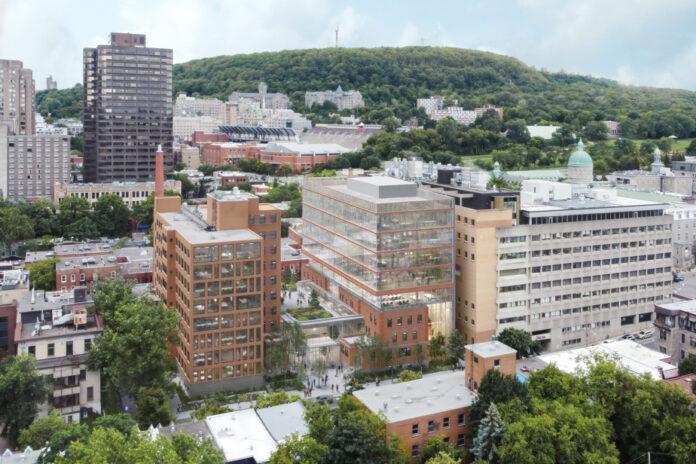Toronto has its MaRS neighborhood; Boston, its Greentown Labs; Montreal will in turn have its life sciences innovation hub.
The former Montreal Chest Institute, abandoned since 2015, becomes Inspire bio innovations. According to its promoter, the 3650-3655, rue Saint-Urbain will play a central role in the development of new drugs.
Owner of the site since May 2019, the developer Jadco will host the headquarters of CellCarta (ex-Caprion) there in the first phase of the project, which consists of renovating the existing 8-storey building and its 9,000 square meters.
The announcement was made by Jadco and CellCarta late Thursday afternoon at the “Effervescence; the future of life sciences” held at Bonsecours Market in Old Montreal.
Founded in 2000, CellCarta is a biomarker specialist with annual revenues of over US$200 million and 1000 employees in its 11 laboratories around the world. The contract research company offers its precision medicine services in clinical trials conducted by biotechs working on the development of new drugs.
“We help developers of innovative products to better target their drugs to the patients who respond best, which is called precision medicine”, explains in a telephone interview Martin Leblanc, co-founder of CellCarta and vice-president of his board. .
Currently, most of the labs occupied by CellCarta are located in the UQAM science pavilion. Head office functions are housed at the KPMG Tower, 600 De Maisonneuve Boulevard West.
In mid-2024, its approximately 350 Montreal employees will move to rue Saint-Urbain just south of avenue des Pins and the Montreal Clinical Research Institute (IRCM).
“We want our headquarters where we can bring everyone together in a very efficient way with next-generation tools and labs,” continues Mr. Leblanc. We are going to consolidate all that in a building with all the synergies that brings.
This life sciences hub in the city center joins the existing hubs of Laval and that of the borough of Saint-Laurent, led by Néomed.
The goal is to make Inspire bio innovations the life sciences district as O Mile-Ex, further north on Saint-Urbain Street, has become the nerve center of artificial intelligence in Montreal.
In addition to the presence of CellCarta, Inspire bio innovations will offer state-of-the-art laboratories, a rare commodity in central districts. These will occupy at least 50% of the area of the intersection. In addition, there will be co-working spaces, a glazed atrium, a conference center and a rooftop terrace. The complex is signed Nine architects.
Construction of phase 2, which will consist of the construction of a nine-story building just north of phase 1, is scheduled to begin late this year or early 2024 for phase delivery towards the end of 2025, says Normand Rivard, Partner, Director, Life Sciences and Innovation at Groupe Jadco, also present during the call.
Jadco has $1.2 billion in current or projected investments for a total of 1,500 homes. We owe him the luxury condos Le Quintessence in Laval, in particular. The developer is in the process of redefining a lot in the Galeries d’Anjou sector.
The promoter underlines the proactivity of the borough of Plateau-Mont-Royal in the progress of its project in the regulatory process and the requirements in terms of urban planning.
“We have put in place a very diligent and efficient support process for the project. The developer, the director of urban planning, the head of division and the professional in charge were present at the meetings to ensure that we were able to untie the knots over time. I think the promoter appreciated it,” says Luc Rabouin, mayor of Plateau-Mont-Royal and member of the executive committee responsible for economic and commercial development, knowledge, innovation and design.
At this time, senior governments have not advanced funds for the new downtown life sciences hub. Discussions are ongoing.
Based in Toronto, MaRS Discovery District, as in the MaRS Foundation, for Medical and Related Sciences, is one of the largest urban innovation hubs in North America. The district represents 100,000 square meters, located in the city center, close to the ecosystem of health, green technologies and financial technology, the university hospital and its talents.
The Saint-Urbain Street site first housed the Royal Edward Institute, which later became the Royal Edward Hospital of Montreal. In 1971, the Montreal Chest Hospital Center was created and in 1994 took the name of the Montreal Chest Institute (ITM). On June 14, 2015, the ITM on rue Saint-Urbain closed its doors to move closer to the McGill University Health Centre.















